#1980's Anime and Manga
Explore tagged Tumblr posts
Text

#Anime & Manga#1980's Anime and Manga#Akira Toriyama#Shonen#Dragonball: Broly Movie#2018 Movie#Broly#Saiya-jins#Mutant Saiya-jin#Son Goku/Kakarot#Son Goku#SSJB#Super Saiya-jin transformation#Sci-fi#Action and Adventure#Toei Animation
9 notes
·
View notes
Text

#anime#sleep#manga#ghost in the shell#animatr#90s anime aesthetic#ghost in the shell 1995#anime gif#gif#retro style#retrowave#retro#retro anime#retro aesthetic#anime aesthetic#90's anime#90s anime#smoking cigarette#anime style#anime vibes#cute anime gif#1990's anime#1990s anime#anime gifs#80s#1980s#synthwave#new wave#synthpop#chillwave
581 notes
·
View notes
Text


OG Cyberpunk TT Guide upscaled and colored by ODIO
#Anime#Manga#otaku#edit#japanese#aestethic#colorful#design#odioart#pop art#popculture#cyberpunk#cyberpunk 2077#tabletop#video games#rpg#editor#colorist#curator#designer#1980's#northwest georgia#artist
88 notes
·
View notes
Text
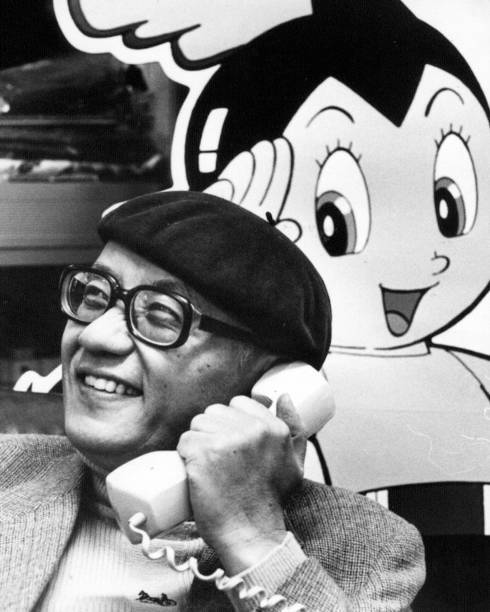
手塚 治虫 (1984年)
Osamu Tezuka (1984)
114 notes
·
View notes
Text
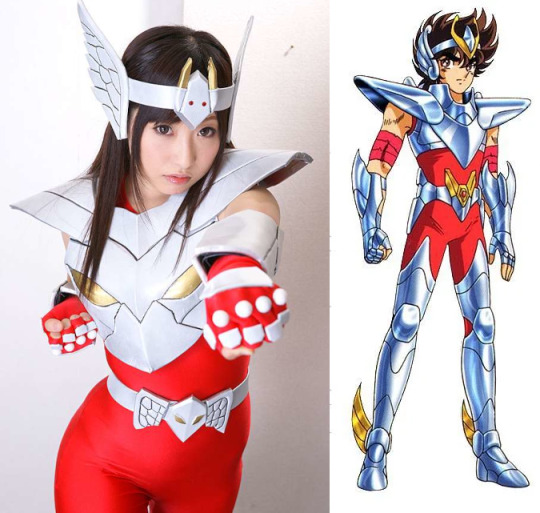
Gender-flipped Pegasus Seiya from Saint Seiya (1985).
39 notes
·
View notes
Text

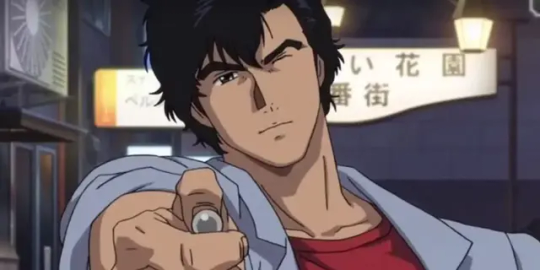
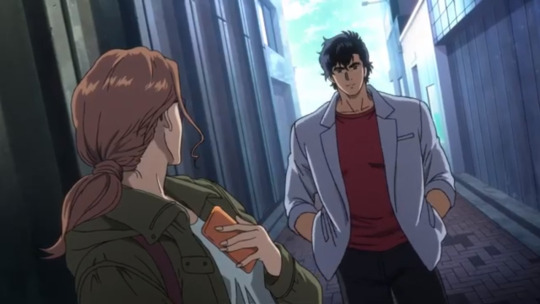
シティーハンター - 冴羽獠
リョウはシリーズの主人公です。 リョウは3歳のとき、中米での飛行機事故で唯一の生存者となった。 彼はゲリラ戦士として育てられ、自分の以前のアイデンティティについては知りません。 戦後、リョウはアメリカに渡り、その後東京に移り住む。 東京では槇村秀幸とともに「シティーハンター」チームを結成するが、秀幸の死後、香がリョウの新たなパートナーとなる。 非常に熟練したガンマンであるリョウは、標的のまったく同じ場所にすべての射撃を着弾させる「ワンホールショット」を実行することで知られています。 彼のお気に入りの武器はコルト パイソン .357 マグナムです。 リョウは同僚の伊集院隼人に「海坊主」というあだ名を発明し、彼はリョウに「新宿の種馬」(新宿の種馬)というあだ名を付けたと答えた(リョウは人を殴ろうとする真の変態だから、皮肉な名前だ) 彼は出会ったり見たりした美しい女性にすべてを言いますが、毎回失敗します)。 リョウはリボルバー、半自動銃、マシンピストル、ライフル、カービン銃、クロスボウを扱う熟練した射撃の名手です。 彼は白兵戦をよく知っており、必要なときには真の命知らずのように運転します。 彼の車はミニです。
6 notes
·
View notes
Text


⋆.˚✮🎧✮˚.⋆ reblog for bigger sample size!
#usagi tsukino#serena tsukino#sailor moon#manga#anime#1990s#1990's#90's#90s#stacey q#1980s#1980's#80's#80s#80s music#dance pop#hi nrg#gimmick blog#gimmick account#polls#tumblr polls#fandom polls#imagine your f/o#imagine your fictional other#imagine your favorite character#shoujo#imagine#magical girl#Spotify
1 note
·
View note
Text
Sasuke and Japanese Masculinity
There are some Naruto/Sasuke blogs that I generally like and I am in agreement with many of their analysis but one of the ideas perpetuated by them is the idea that Sasuke is the feminine counterpart to Naruto' s masculine one or that he has characteristics typical of a heroine, which I can not agree with.
Let's start with one of the most befuddling claims that I have come across -

You can only come to the above conclusion if your only consumption of Japanese media include post 1980 Shounen or Toukatsu TV.
Theatre/Kabuki were enactment of the existing literature and I can assure you that their protagonists were FAR from the modern Shounen protagonists( I discuss this in detail below ).Almost every character in Kabuki has exaggerated make up and wore bright colour, it's not reserved for the protagonist either.
"The Ideal Japanese Hero"
This is a very broad term in itself that doesn't take into account the time period nor genre.
The character traits typical of a Shounen protagonists that presumably OP is talking about such as being short tempered/rebellious/punkish appears very late in the history of manga. These protagonists exhibited such qualities to be relatable to adolescent boys but they are not the ideal conception of masculinity in Japan and they are often criticised for being immature.
These characteristics are often not found in Seinen/Gekiga works, or any literature that is not targeted at kids.It consists of a very diverse variety of protagonists but they are much closer to the Japanese equivalent of a Byronic hero than a loud troublemaker. Take Blade of the Immortal , Vagabond , Berserk , Vinland Saga etc.
Back to Sasuke : Revenge and Restoring Honour
These are the topics that are so embedded in classical Japanese literature that there is an entire Genre dedicated to it : Jitsuroku
The one that started it all i.e Forty-Seven Ronin tells the story of revenge against a political opponent who caused the death of a Samurai lord by wrongfully framing him. This story and it's themes are embedded deep in Japanese heritage and remains one of the most influential works that would inspire similar stories.
The story of being wronged due to politics, resulting in dishonour and ultimately death and then being avenged by the protagonist who sets out to fulfill his duty of revenge and restoring their honor owing to filial piety or loyalty becomes a staple genre. One of the examples being Tales of Jiraiya, one of the many inspirations for Naruto
And Sasuke is a textbook example of such a character from this genre.
He is the typical classical Japanese male protagonist
Despite being a deuteraginist he challenged Naruto's role as a protagonist both in the text and outside of it . During the run of Naruto on Weekly Shounen Jump , Sasuke would occupy the #2 position for the vast majority of times and even beat Naruto at least once to take the #1 spot. His character and story arc was incredibly popular in Japan because it exhibited characteristics of a classical Japanese hero.
He might get mixed reactions in the West but he is beloved in Japan. So much so that some people wanted him to be the protagonist instead of Naruto.
Naruto while a beloved protagonist is considered too naive,and almost childish in his beliefs . While Sasuke is his mature counterpart who is capable of ideological introspection.
Blogs that are in favour of putting the 'heroine' role on Sasuke often use a comment made jokingly by one of the anime directors as Sasuke being the true heroine because he is to be chased and rescued by the protagonist or claim that some Japanese people discuss him as such and I am ????? Are you serious? This is such a superficial way of looking at their relationship and Sasuke's character arc or even what actually transpired between them that I am not even bothering countering it.
If you could browse 2channel back in the day , you would see hundreds of messages in various threads that Sasuke is apparently the true hero of the story or how they want Sasuke to be the protagonist. There would also be comments about how emasculating Naruto's relationship with Sasuke is but that is another can of worms.
It is a common sentiment in Japan that if Naruto was a Seinen manga, Sasuke would undoubtedly be the protagonist.
Instead of being the 'heroine' or 'feminine counterpart', Sasuke exhibits the reserved, graceful and mature masculinity typical of a classical Japanese hero in counter to the open,exuberant and juvenile masculinity of Naruto.
There are people who claim Sasuke being a bishounen and graceful is him being the feminine counterpart because he is the Yin to Naruto' Yang. I highly disagree, Yin-Yang analogy is used throughout the manga to describe contrasting forces especially darkness/hatred and light/love , it is not used to portray outward characteristics. Using Yin-Yang to explain their appearances or behaviour is just extrapolating using the philosophical concept outside of its use of the manga.
While femininity is associated with Yin, I would like people to introspect what 'feminine traits' in the Japanese context constitute. Because the 'feminine traits' that Sasuke apparently exhibits aren't feminine at all.
Sasuke-Naruto are not the only two duos with such outward contrasts anyways , it's predecessor duo and one of the most recognisable rivals (at least in Japan) like Rukawa-Sakuragi from Slam Dunk, which Kishimoto likely took inspiration from has Rukawa who is aloof and desirable vs Sakuragi who is more of a delinquent in both appearance and behaviour . Such contrasting outwardly attributes are present in a lot of Shonen rivalries, you don't need Yin-Yang concepts to explain these.
On this tangent I would actually recommend everyone to read Slam Dunk not only because it is good but to also actually understand how a normal Shonen rivalry between likely straight males works and how much of a deviation Sasuke and Naruto' relationship is. I mentioned before that Kishimoto likely took inspiration from this and I say this because in addition to Rukawa-Sakuragi's rivalry in the sport, there is a love triangle aspect to it. Sakuragi loves Akagi who has a crush on Rukawa, who doesn't care. Here's where the similarity in the dynamics ends. Sakuragi actually really likes the girl ,he only starts playing basketball to impress her and then develops a rivalry with Rukawa. I can go on about their similarities and Kishimoto's subversion but it's a topic for another post.
Getting back on topic.
Sasuke's Desirability and Beauty
One of the most common arguments that is used in favour for Sasuke as a heroine is that he is desired by multiple people in the story and how his beauty is commented and highlighted on, and that these are the features apparently typically given to the female love interest.
This is one of the most ignorant claims I have ever come accross. Japanese literature has a long-standing tradition of exalting the beauty of males and their desirability, often to denote how perfect and/or otherworldly the person is.
One of the seminal works in Japanese literature Tales of Genji had to say this about its protagonist Hikaru Genji : "His appearance tempted men and women alike, as he had smooth white skin, excellent fashion sense, which increased his fame and popularity". His beauty is commented throughout the novel and he is desired by many, this doesn't negate his very masculine character.
It brings me to the next topic:
Bishounen
This is a term with so much history and what tropes it is associated with changes according to what genre it is used in that I am not surprised that some people just use it as a synonym for feminine/homosexual men. But in the contemporary lexicon and usage it just means a pretty boy of any sexuality.
Bishounen serve as love interests in Shoujo, the entire cast in a BL, Antagonist/Rival and sometimes even the protagonist in Shounen and Seinen. It just means a man who looks handsome/beautiful in a androgynous way but at the same time not be mistaken for a girl.
I came across this post and this is what put me over the edge to actually create a proper post because the claims here are completely eregrious

" saying Sasuke is meant to be a typical Japanese ideal of masculinity....... wearing lipstick crazy"
I don't think that the author drawing Sasuke with stage makeup on a cover featuring him as an actor negates the fact that Sasuke is meant to be a typical Japanese ideal of masculinity, I have already discussed it in detail above the reasons he is considered such.
"call Sasuke the Japanese ideal of masculinity... funny... meant to be bishounen"
OP themselves doesn't have any Idea on the Japanese conceptualisation of masculinity nor the term Bishounen, which is fine if they weren't scoffing at an objectively correct reading of a character due to their own ignorance.
Being beautiful, youthful and desirable is well within the form of Japanese masculinity. Being bishounen doesn't negate masculinity, on the contrary validates it.
The sublime masculine Samurai were obsessed with keeping youthful appearances. And there is a reason almost all Japanese male idols/actors/singers strive to look androgynous.
I don't think Sasuke/Sakura shippers refuse to accept that he is Bishounen, that's quite literally one of his appeals,it's a general term not exclusively used to describe homosexual men. The origins of the term definitely contains homoeroticism but as I have said before that in contemporary usage it just means a pretty man and can be found in almost all type of Japanese media.
However if anybody uses the 'Japanese Ideal of masculinity' as an argument against him being attracted to a man, they would be displaying ignorance as these are concepts which can be found in a complementary fashion throughout Japanese literature.
Bishounen also has different tropes associated with it depending on the genre:
Comics for younger boys tend to use arrogant bishōnen in the role of the recurring minor rivals readers love to hate, though their effeminate good looks there, they will often appear older... stronger, and thus in fact more masculine than the commonly shorter and less mature protagonists.
- Manga: The Complete Guide, Del Rey
I think many people cannot let go of their Western sensibilities when analysing the text, especially in relationship to concepts like masculinity which is very dynamic even in Japan. They see two contrasting masculine characters: one being more open and brash and the other being reserved and graceful , and come to the conclusion that the latter is the feminine counterpart , which cannot be further from the truth.
Either that or some people are affected by their bias towards a certain pairing dynamic.
TL;DR Sasuke is the embodiment of classic Japanese masculinity
93 notes
·
View notes
Text
Misunderstanding
I received a note from someone who was upset I “failed to cite Scott McCloud’s Understanding Comics” in my research for my work on Neil Gaiman's Chivalry and the essays I wrote about it.
I really appreciate that people want to make sure credit goes where it's due, and I have a lot of respect for Scott McCloud's accomplishment with his wonderful book.
I haven't read it myself in some years, and didn't cite it in my articles because I didn't reference it. I don't even know where my copy is so I don't know what McCloud referenced, either.
The information in my articles re: illuminated manuscripts and the Bayeux Tapestry, as well as other theories about the development of sequential art from prehistory, not only predate McCloud's work (and in fact, predate McCloud's birth,) but they are so common and so well known in comics circles that asking me to cite them seems as weird to me as asking me to cite the information that George Washington was the first President of the United States.
A part of me wonders if someone is trying to play, "Let's you and him fight."
No.
But I’m happy to bring to your attention some reading material.
Stephen Becker in his 1959 work Comic Art in America: A Social History of the Funnies, the Political Cartoons, Magazine Humor, Sporting Cartoons, and Animated Cartoons was among the first to discuss the Bayeux Tapestry as comic art. I read that book sometime in the 1980’s. I think a lot of people assume the Bayeux tapestry as comic art was McCloud’s idea, but we don’t all walk around with a reference library in our heads, so there you go. I can’t find my copy of Becker’s work to quote, but I did find an article by Arthur Asa Berger with a mention of the Bayeux Tapestry as comic art in the summer 1978 issue of The Wilson Quarterly.

My first exposure to the idea of comics as descendant of fine art was Maurice Horn’s 1976 The World Encyclopedia of Comics which was my first read re: comics history. I still have my tattered 1976 edition.
While Horn scorned the idea that tapestries and manuscripts could be comic art (see, it was a matter of discussion way back then, so much so that authors were writing snarky asides to one another about it,) he believed the origin of sequential art was in the Renaissance sketches of Leonardo da Vinci - which I think everyone now agrees is kind of a bonkers idea.

I think Horn was just intent on elevating the comic art form by hooking up with da Vinci.
You go, boi.
Comics as descendant of art on scrolls is a very common theory, the easiest to trace being in Manga! Manga! The World of Japanese Comics by Fred Schodt published in 1983 when I was still a teenager. I can't find my copy to show examples, but this text is still in print and you can go read it for yourself.
I was introduced to manga by cartoonist Leslie Sternbergh and bought Schodt’s book at Books Kinokuniya on (I think) a trip to New York around the time of first publication of Schodt’s work. And years later took a trip to Japan with Fred Schodt and a group of cartoonists including Jeff Smith and Jules Fieffer, Nicole Hollander, and Denys Cowan as the guests of Tezuka Productions.
Here we all are.
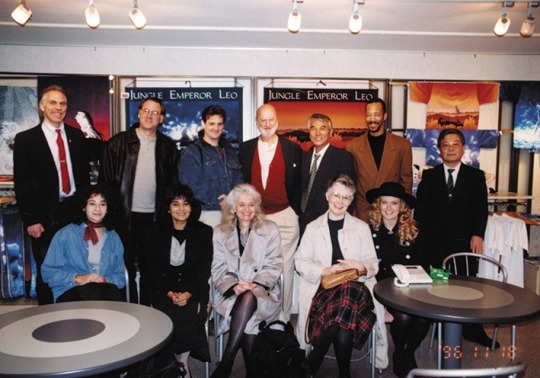
So, I’m familiar with manga, see.
As for comics as descendant of cave paintings, hieroglyphics and ancient art in general, Will Eisner’s 1985 Comics and Sequential Art not only made all of those points, but made those points with comic art examples. Like these.

And this.

And this.
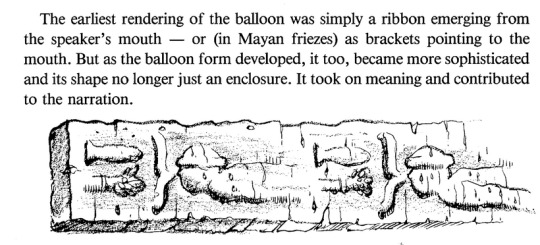
And more than a few words on this:


I find it amusing that someone is questioning why I didn’t cite McCloud when what you should probably be questioning is why more people don’t cite Eisner who produced his book eight years before McCloud published his and who is well known to have influenced McCloud.
Whatever. My book's autographed.
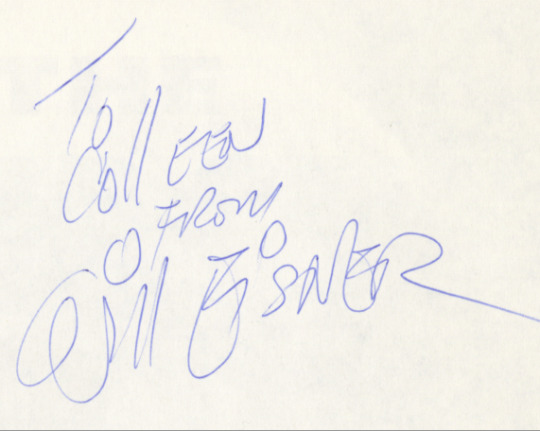
I also danced with Eisner. Eat your heart out.
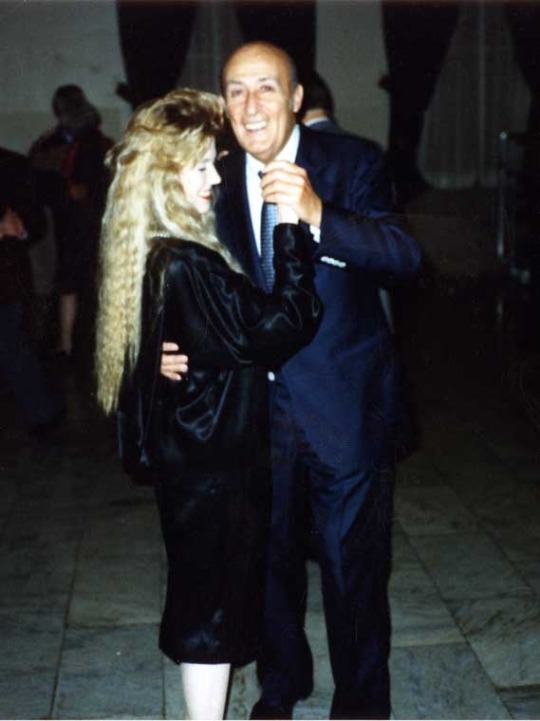
Understanding Comics is a terrific work with huge advantages over every book (that I know of) about comics that came before: it taught comics entirely in the language of comics.
But the discussion in it about the origins of comics and my work especially re: illuminated manuscripts/tapestries, did not originate with McCloud. I research illuminated manuscripts because it’s my hobby and it informs my art.
I encourage everyone to read Understanding Comics because it is an outstanding work.
But it’s not the book that introduced me to the concepts of the development of comic art. It’s not even the point of origin of those concepts. So, there is no reason to cite it.
Also, shocking as it may seem, I occasionally come up with ideas on my own. While I'm younger than McCloud, I've actually been a comics pro longer than he has. So I've had plenty of opportunity to, you know, read things and toss things around, and decide for myself.
When I first read Chivalry and first begged Neil Gaiman to let me adapt it, my head full of the work of Alberto Sangorski and his art for Tennyson’s Le Morte D’Arthur, Understanding Comics hadn’t been published yet.
It's been a good twelve years since I last read McCloud's work, and I don't think I've spoken to him five times in the last three decades. But I'm pretty sure he never mentioned Sangorski.
I hope that clears everything up, and maybe introduces some of you to some works you might not be aware of.
Have a great day.
#understanding comics#comics history#neil gaiman#scott mccloud#chivalry#jules fieffer#tezuka productions#manga#will eisner
2K notes
·
View notes
Text
Saw this really cool post of a 1982 "SF" (Science fiction but in Japan that included things like anime, manga, tokusatsu, etc at the time) magazine that did a survey of active fan groups/circles at the time - ~woo, precious data! Lets see what we got:

Love to see a good gender breakdown - as is often the case in these things, while it is of course majority men the number of women participating is very strong. You do notice the age imbalance there - many women in their teens and college-aged, but it drops off quickly. I suspect that this is primarily because this survey is right in the middle of the first wave of the "pop SF boom", where more approachable works like Gundam and new manga subgenres were rapidly growing the community. So the older cadre was more heavily men, while the new group is more balanced. However, this is the early 1980's - it might just be that when a woman graduates college she was expected to marry and "settle down" still, inhibiting participation in these kinds of groups. I think it is primarily the former, Japan had pretty rapidly changed in the 1970's and female creative types were commonplace by then, but I won't pretend the latter players no role.
The writing on this page just contextualizes the piece, not much to report, though it does note that "3 people replied 'other' for gender...as a joke!" Sure, jan!
Anyway, on to page 2, what is our poll question of the day...
ロリコンについてどう思いますか? What do you think about lolicon?
....*siiiiiighs* guys I didn't, I didn't look at the second page before typing this up! I just wanted to report the gender data! This just happens to me, I swear -_-
But I can't back out now I guess:

It actually splits the question by gender - men are asked "are you a lolicon" while women are asked "what do you think of guys who are lolicon" - sexists, way to erase the female lolicon. Not actually joking there, it is a quite a thing due to its overlap with rape and dubcon fetishes - but I won't pretend I have expertise on the prevalence of that in 1982 Japan's SF community, even if it you see it today. Anyway, most men are not lolicons (the tallest line), though others fall on a spectrum from interested to "graduated", certainly a choice of words one could make.
Funnily a good dozen say they are called that by others, but not themselves - I believe that is related to the vague line between loli & shoujo aesthetics at the time. Which is important to emphasize, as I always do on this topic - sometimes the word lolicon just means "youthful" or "cute", sometimes it means like high schoolers, and sometimes it means real-deal underage stuff, and you won't know without context.
Meanwhile two women label lolicon men as "cute!", good for those two living their truth, while others are broadly tolerant but have Opinions. Which is fun, because the rest of the page is people sharing said opinions, sorted into "good" or "bad"! Some choice ones:
★ It's a symptom of modern civilization’s sick parts, but also an inevitable phenomenon. It’s better than having a rabbit or cat complex. Don’t lay hands on young girls. Lolicon must remain platonic. (♂/19/)
You see this theme a bit, "symptom of modernity", the new sexual fetishes are a product of a changing world. Certainly up for debate, but also very "in vogue" for the 80's & 90's to worry about that sort of declinist narrative. Then again, guy is a catgirl and bunnygirl hater, not sure we should listen to their shit taste.
On the flip side you get the "natural way of things" types, of which this is my favourite:
★ There’s nothing abnormal about having a dream involving an uncontrollable urge towards pre-teens. Even Romeo and Juliet would have made Romeo a lolicon given Juliet’s age (14), but people don’t think of it that way. Only at that age can girls love and respect men without ulterior motives. (♂/19/)
That last line, you are telling me so much about you with that one!! You can see how this is discourse, right? Like if one side says you are a "symptom of modernity" you ofc respond with "this is how all guys are" and with callbacks to traditional culture.
The "bad" side has a lot of ruthless condemnation, with more than one call for the lolicons to simply die or labelling them worthless scum. The magazine's writers do try to keep the tone breezy but I do think this topic being actually contentious in the community pokes through here. Though this serious one really did undercut herself a bit at the end:
★ I can understand why one person of the same gender might feel admiration or affection for a child or young girl, but for a man to only be able to love much younger women? That’s a mental illness! If they aren’t willing to fix themselves, they might as well die. They’re enemies of women. It's not going to turn out like Nabokov's Lolita. (♀/20s/)
I mean they did also kill jesus Humbert Humbert in Lolita. that was a pretty significant thing that happened. like i understand where you’re coming from here but they very much did kill the Lolita guy.
There is an editorial at the end, and it echoes something one of the comments also states; that the lolicon boom was seen as coming from "hard" SF fans, the people who did the really nerdy stuff. There is a word they use actually which is neat: 根暗/Nekura, meaning someone with a "gloomy root". It began seeing use as a slang for hyper-serious, boorish people in the late 1970's and became a fad to use in precisely 1982 - here is a live record of that! They associate "hard SF" fans with these sort of gloomy types who can't take a joke or appreciate hanging out with the buds at a bar, that kind of thing. From there, and here I am reading between the lines, these fans like a sort of "idealistically sterile" world, and lolicon as a preference (in comparison to Real Adult Women) flows naturally.
I mention this because astute readers might be going "oh, like otaku?" and that word was only just buzzing around at this time - it is typically dated to 1983. The editorial writers note that these nekura-types are nowadays proud of that fact, wearing it like an identity:
A: I’m not really sure why, I don’t fully understand the inner workings of the SF world, but it’s like, out there, hardcore SF fans are considered gloomy. Maybe that’s why there’s this connection to lolicon? B: But surprisingly, everyone’s actually pretty cheerful. In today’s world, the 'dark and gloomy tribe' is trendy. It’s like they’re enjoying calling themselves gloomy, almost as a fashion statement.
So yeah, I can totally see proto-otaku discourse going on at the edges here.
There is a third page but it continues in a similar vein. A bunch of mentions of Hideo Azuma, who I am growing increasingly convinced was more of a lodestone for the lolicon boom than is currently appreciated - he is the ur-reference everyone makes. More discussion of girls in sailor uniforms as a gateway drug, yeah yeah, "is fine as long as its fiction", of course of course, one of the magazine editors remarking he wants "a wife for practical uses but a daughter as a pet" yeah okay we can call it we're done here, no more survey data anyway.
Not the topic I expected to find, but still this is really valuable "primary source data" - you can't trust the literary class fully on these things, having first hand quotes from community members on otaku culture in the era is always valuable.
Sorry if you got tricked into reading this - in my defense I did too!
60 notes
·
View notes
Text

#Son Goku#Son Kakarot#DBZ#Dragonball franchise#SSJ 1#Super Saiya-jin#Shonen#1980's anime and manga#Akira Toriyama#toei animation
0 notes
Text

#anime#manga#mecha#90s anime#animatr#anime space#space explosion anime#anime gif#gif#retro style#retrowave#retro#retro anime#retro aesthetic#anime aesthetic#90's anime#smoking cigarette#anime style#anime vibes#cute anime gif#1990's anime#1990s anime#anime gifs#80s#1980s#synthwave#new wave#synthpop#chillwave#80s anime
33 notes
·
View notes
Text
An Abbreviated History of Mecha Part 1: The Mighty Atomic Prelude (The 50's and 60's)

Welcome to An Abbreviated History of Mecha anime. Today, we're starting at, as Fraulein Maria would say, at the very beginning. We're taking a quick peak at the beginning of the canon, which means that we're starting back in 1950 (specifically 1952). I should also confess right now: there are two series on here that are demonstrably NOT mecha shows. However, due to their sheer influence on Japanese media as a whole, I feel it is important to bring them up as being honorary mecha shows due to their sheer influence pop culture.
Tetsuwan Atom/Mighty Atom/Astro Boy (1952)

Starting us off is Osamu Tezuka's seminal manga series, Mighty Atom. Known over here in the west as Astro Boy, this series would be what kickstarts a lot of the modern anime and manga industry due to its sheer popularity. Astro Boy would also be one of two series that would be emblematic of how Japanese pop culture would portray the recent use of atomic energy. It should also be worth noting that realizing that Astro technically is a mecha is what got me to start using a broader definition of mecha instead of the classic giant robot definition.
Due to its fame, Mighty Atom has receive multiple adaptations throughout the years. Of note are:
The original 1963 anime.
New Mighty Atom (1980) which updates the series to 1980's animation standards.
The 2003 anime, which does the same, but to the standards of early 2000's anime.
The 2009 CGI movie.
Gojira/Godzilla (1954, honorary mecha series 1)

1954 would also give us Ishiro Honda's Godzilla, the movie that would make tokusatsu-styled live action stories in Japan. Godzilla, alongside RKO's King Kong, would play a large part in popularizing the concept of kaiju. And boy will kaiju play a big part in the history of the mecha canon. As we'll see soon enough, the history of tokusatsu heroes, kaiju, and robots are all intertwined with one another.
Godzilla has starred in numerous movies since the original, but for stories based off of the original there are:
Godzilla Raids Again (1955), a direct sequel.
Godzilla, Mothra, King Ghidorah: All Out Monsters Attack (2001), a Heisei-era production that uses the original '54 Godzilla as a manifestation of the horrors of World War II.
Shin Godzilla (2016), a re-imagining of the original movie set in contemporary times directed by Hideakki Anno.
Godzilla Minus One (2023), the most recent outing inspired in part by GMK.
Tetsujin 28-go/Gigantor (1956)

(Oh hey, this gif again!)
Tetsujin 28-go is the creation of one Mitsuteru Yokoyama and is generally regarded as the grandfather of the giant robot style of mecha. Tetsujin is unique amongst mecha in that it is controlled not by a pilot riding inside of it, but by a little kid with a controller. Tetsujin 28, alongside Mazinger Z, would help to codify a lot of the tropes common to the classic superhero mecha anime that would be prevalent in the 70's. Like Mighty Atom, Tetsujin would receive multiple adaptations throughout the decades.
Shin Tetsujin 28-Go/The New Adventures of Gigantor (1980), which updates Tetsujin's design to look more in line with something like Mazniger Z.
Tetsujin 28-go FX (1992), sporting a radically different look that's more akin to something out of the Brave Franchise.
Tetsujin 28 (2004), a faithful adaptation of the original manga (at least I think it is) directed by Yasuhiro Imagawa.
Cyborg 009 (1964)

Created by Shotaro Ishinomori in 1964, Cyborg 009 is another classic human-sized mecha series. Cyborg 009 would be the first of many hits for Ishinomori, and he will be mentioned again later in this series.
Oh boy... I am not a Cyborg 009 nut, but in terms of adaptations, Cyborg 009 has:
The 1966 Film
The 1980 Film
009 Re:Cyborg (2012)
The Call For Justice Trilogy (2016)
The 1968 Anime
The 1979-1980 Anime
The 2001-2002 Anime (I actually remember when Toonami aired this series!)
Cyborg 009 vs Devilman (2015 OVA)
If you want to follow someone who follows a lot of Shotaro Ishinomori's works, I'd recommend checking out YouTuber Mercury Falcon for more info about Ishinomori.
Ultra Q and Ultraman (1966, honorary mecha series 2)

(The urge to use a gif of Ingraman is strong)
Ultra Q and Ultraman are the first two entries of Tsuburaya's legendary Ultra franchise, with the latter in particular being one of the most famous pop culture icons of all time. Ultraman's influence on Japanese media is so large, that I'll be mentioning it at least once in relation to other series later on.
Ultraman, like Godzilla before him, would get the Hideaki Anno treatment with Shin Ultraman in 2022.
Giant Robo/Johnny Sokko and His Flying Robot (1967)

Another one of Mitsuteru Yokoyama's classic manga series, Giant Robo deserves a mention due to its influence on tokusatsu. Giant Robo would usher in an era of tokusatsu that would rely on using giant robots as the main protagonist.
In terms of adaptations, there are two animated adaptations, but only one will be listed here:
GR: Giant Robo (2007)
If you want to learn a little bit more about the history behind Giant Robo, I'd recommend checking out blunova's video on Giant Robo for more info on this important series.
Conclusion
As the 60's would lead way into the 70's, we would see a lot more live action tokusatsu series involving giant robots. Of course, this would be untenable due to how expensive it was to do tokusatsu effects for television. However, one robot would appear in animation that would change everything.
(Read in the voice of Tessho Genda) AND ITS NAME IS...!!!!

#anime and manga#mecha#astro boy#mighty atom#tetsuwan atom#gigantor#tetsujin 28#cyborg 009#giant robo#ultraman#an abbreviated history of mecha#anime history#godzilla#gojira
50 notes
·
View notes
Text

Aaaaaand here's my second contribution for the @flash-exchange! and this was written for the darling @spoopy-fish-writes. I had the idea for this pretty early and I can't stop giggling at it, honestly.
Title: Mischief
Characters: Will/Fem!reader, Sebastian, Dazai
Prompt: Kabedon
Tags: fluff, kabedon, Dazai being a lil shit, Sebastian isn't helping
You had just finished making that evening's coffee with Sebastian, making light conversation with him. You reminisced about some things from your original time, lightly complaining that so many of the romance books you tried to read could use a little more… impact. “Honestly, there are so many scenes that could be amplified with a kabedon, but that didn't even come about in our time until the 1980's,” you sighed. You were glad you hadn't picked up the whole tray as a voice from behind made you jump. “Kabe-don?” Turning quickly you saw Dazai leaning in the doorway, a lazy smile on his face and a contrasting mischief in his eyes. “Good evening, Dazai. Yes, a kabedon. She's referring to a moment in modern Japanese manga and animation in which one character essentially somewhat traps another character against a wall.” Sebastian moved to the wall and displayed the position. “Now, imagine there's another person between me and the wall with them facing me. My flat hand hits the wall beside the other person's head. Kabe for wall, don for the sound the impact makes. Usually there is romantic tension between the two characters.” You felt yourself blushing as Sebastian explained. You swore you saw a spark in Dazai's gaze as he acted unphased with the new information. “I see. It dramatically raises tension between two characters. The sudden proximity, an air of dominance. Hm. Thanks for the tip.” He smiled coyly before leaving you and Sebastian in the kitchen. A heavy sigh left your lips and you pinched the bridge of your nose. “Why do I have a bad feeling about this?” - The night was getting long and as much as you and Will loved to visit the mansion for dinner occasionally, you were both ready to go home. The interaction earlier with Dazai had all but left your mind as the two of you walked from the carriage stop back home. That was until you both reached the house and Will lingered instead of unlocking the door. You looked at him curiously. “Will?” You prompted him softly with his name, his playful and heated gaze making you shiver. “Apologies, dear heart. Mine mind hath wandered,” he grinned, pressing a kiss to your temple before proceeding to unlock the door. You knew him well enough to know there was something on his mind but there would be a time and place for bringing it up. Thankfully the wait was short because as soon as you were both inside… *don* Your back was suddenly against the wall, heart racing as you looked wide-eyed up at Will. Your stomach fluttered excitedly as he crowded your space. His hand had landed firmly on the wall by your head and his smirk made you blush. He couldn’t help but chuckle as your cheeks turned a brilliant shade of pink and he brought his hand up to caress one with his thumb. “My, my. Curiouser and curiouser,” he murmured. “W-Will…” you stuttered softly, beginning to pout as the pieces slowly came together in your mind. “Did you speak with Dazai tonight by chance?” He laughed and leaned in closer, pressing a kiss to the tip of your nose. “I know not of what you speak,” he grinned as your pout deepened. “Though… I suppose thanks is owed to him for this most… gratifying reaction. I’ll have to employ this guileful tactic more often, no?”
Taglist: @violettduchess , @strawberry-scum , @writingwhimsey , @ikememesengoku , @kissmetwicekissmedeadly , @jozhenji
#ikemen flash exchange#ikemen vampire#ikemen will#william shakespeare#ikemen dazai#ikemen sebastian#fluff#kabedon
41 notes
·
View notes
Text
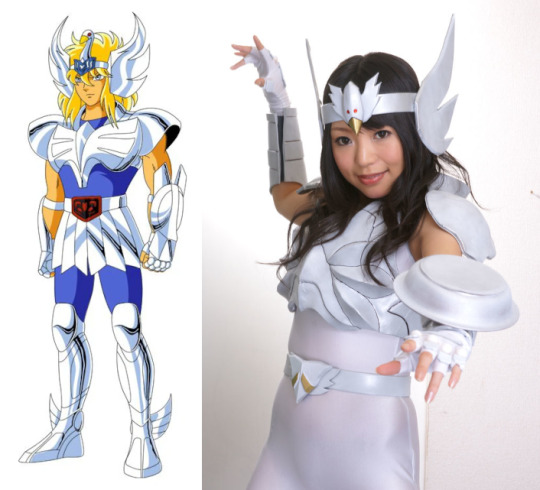
Gender flipped Cygnus Hyoga from Saint Seiya (1985).
16 notes
·
View notes
Text
1. The Birth of Astro Boy
It should be noted that this is not the first Astro Boy manga chapter ever written, but was written in 1975 by Tezuka to give the series a more approachable beginning for Asahi Sonorama's edition/compilation of the series.
Note: Throughout this post, I will refer to the whole series as "Astro Boy" but refer to the character as "Atom." If I get mixed up and refer to him as "Astro" once the text is calling him this, we will just have to live with that because I intend on calling him Atom mostly. If this changes later I'll add a new note to whichever post it becomes relevant on.
I'm not making a timeline here, but as "present day" is 2003, the introductory information states that around 1953, robots "existed in great number" but it took many machines to do the work of a single human.
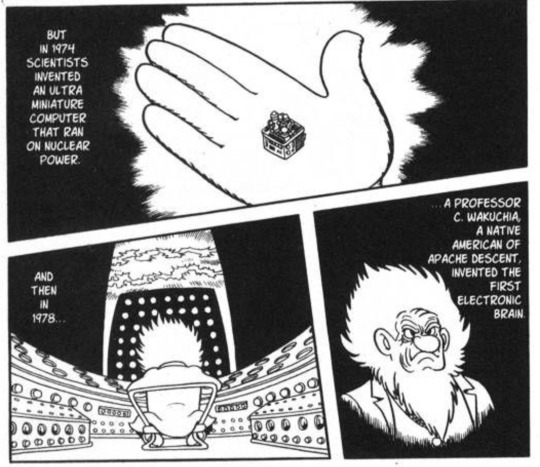
In 1974 our first breakthrough in robotic technology is the "ultra-miniature computer" that runs on nuclear power. This is followed by Professor C. Wakuchia's invention of the first electronic brain 4 years later in 1978. It's also interesting that the manga notes he was of Apache descent. The Japanese professor Sarumane "copied and improved upon the design" and it was used in the first humanoid robot in 1982.
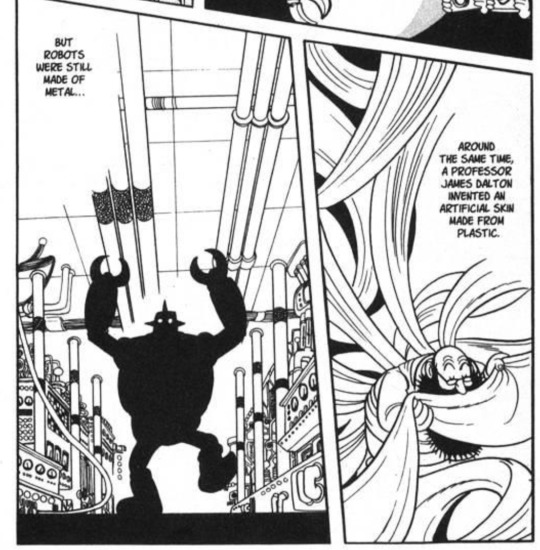
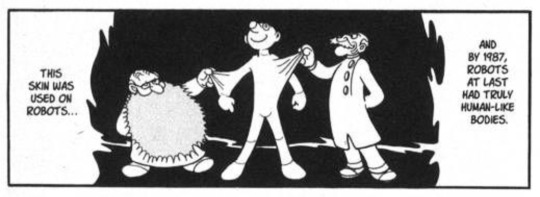
An interesting diversion from the modern-day expected progression of robotics (that being primarily in AI, something not heavily focused on in the original manga and presumably captured entirely by the sentence "First electronic brain") is a heavy focus on that robots were made of metal until Professor James Dalton invented an artificial plastic-based skin in the early 1980's. By 1987, "robots at last had truly human-like bodies."
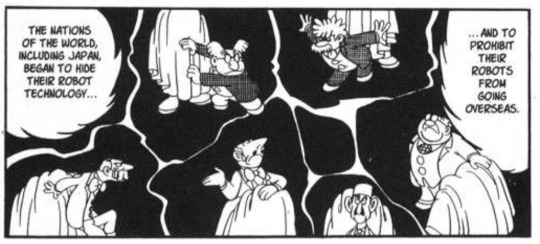
We start seeing that an important element of robotic development was that around this point, countries became protective of their technologies. Another anti-capitalist anti-militarism W for Tezuka here, and I'll likely end up referencing this later when it comes to international relations in the world of Astro Boy.
While Tezuka didn't heavily stress this, I think it could also be interesting to think about what each country and culture would desire in their robots, and what their own personal goals would be to create a highly advanced robot. Is a truly advanced robot capable of independent decision making, or is it subservient? In what ways is it similar to a human? Can it taste? Cry?
5,000 robots per year in Japan is a "very quick" increase in population, especially in Tokyo. I also think it's notable that "Robots even began studying in schools along with human children" - For a robot like Atom, who is made to be akin to a human, this would make sense, but we see in later Astro Boy media that the idea of robots needing to go to school at all (outside his circumstance) kind of gets lowered quite a bit. I can see why - The benefit of school for a robot who can acquire all the information needed rapidly through either downloads or reading it or having it delivered through audio or video is exclusively social (which is what Atom needs it for, too, although he also receives the information he's learning through school as well instead of through download in the original manga, and as far as I know, the 60s, 80s, and 03 anime) and a robot does not need to learn social skills in the same way a human child does. From an American perspective, around the time the original manga was being created African Americans were actively pushing to remove segregation in schools, and I think this whole movement and reaction to it influenced later Astro Boy media as well, as at its core I believe Astro Boy is about what it means to be human, and therefore, human rights.
From a lore perspective, I agree more with the modern take that robot children would be segregated from human children in schooling and that moving Atom to a human school would be a step that received notable pushback. Robots are (from the belief of many humans) intended to be subservient and do not need the social development of having human friends as equals. If a human had a problem with a robot child, the robot child would be expected to resolve the problem entirely, even if it were not their fault. I also think that the idea of robotic children as they appear in Pluto is extremely interesting (but this isn't the place for that discussion so I'll keep it brief) as they are for the development of the parent robots and the idea of a robotic child ends up limiting the ability of the child robot to develop - If a robotic child could develop, they would no longer be childlike. We don't really see anything about developing child robots into another State in Pluto, so this leads me to believe that a child robot would be kept at a certain level of human development without much of a chance to grow from there (thus making it strange to have a child in the first place - Is the joy of a child not seeing them grow? And we do see some of this in Pluto, that one of their fondest memories with Robita is her walking for the first time, a similar experience to what human parents experience with their own children who do grow and change.) The lack of growth of child robots is also sort of touched on in another original Astro Boy comic, so I'll touch on it later too.
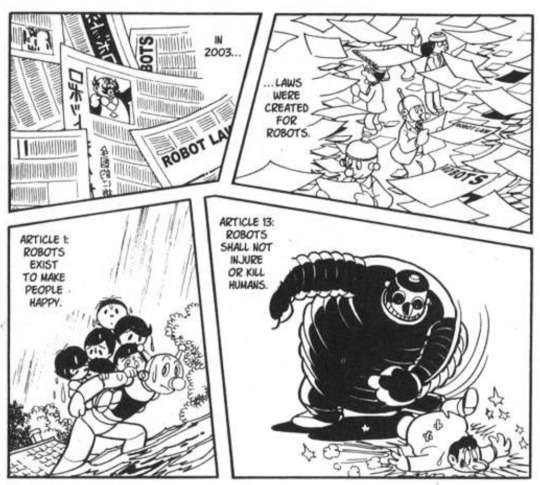
These are the two robotic laws we know so far, and if/when we see more of the robotic (production) laws, I'll be listing them together.
These laws being of robotic production are interesting - If a robot does not prioritize human happiness over their own, this robot is technically against the robotic laws. If a robot injures or kills a human, this obviously results in the robot being disassembled, but it seems like it would also result in their creator being charged as well, as the robot was able to do those things by virtue of the creator not putting in enough safeguards. Again, Pluto plays with this a lot more (robots are capable of harming humans but don't.) (but Pluto doesn't touch on creators of robots also being at fault) but if/when we get to a Pluto analysis, I'll be discussing it then.
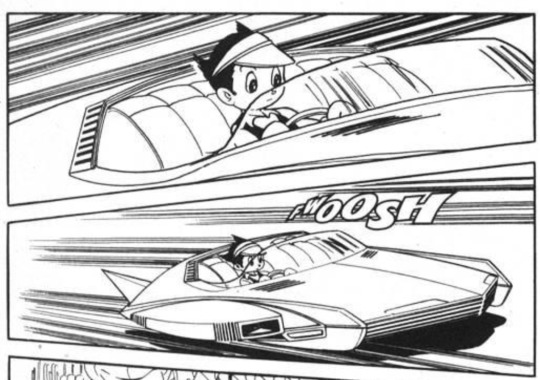
We can see here that human child Tobio is driving a car. This is mostly funny to me - If the robotic car is safe enough for a child to ride in alone, why are his hands on the wheel? Why did it crash at all? Would that crash not be the fault of the robotic car's manufacturer, then? The idea that this accident should be blamed on Tenma (introduced at the very latest in the 1980s anime) is interesting considering this. By 2003 we don't even see him driving a car, he has something more like a bicycle.
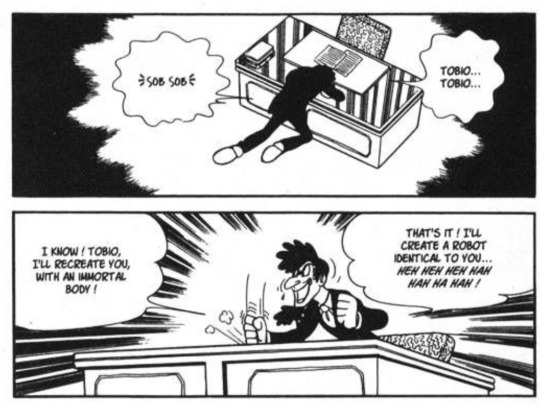
Yea that makes sense. Go ahead and do that man. God I love this series.
Anyway our stress here is on "immortal body" and the goal of having Tobio back, but unable to die. No mention of the weapons and shit he's putting in there but that's probably why.
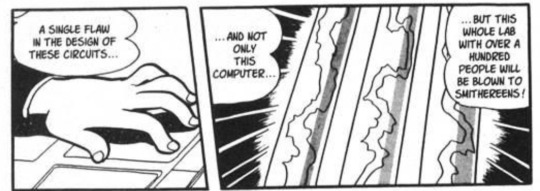
smithereens are basically the most classic thing to blown to.
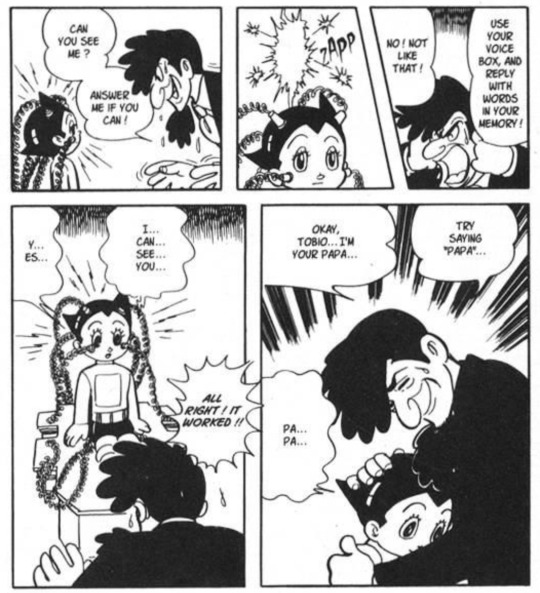
Hooogh I'm normal about it.
First indication that a problem with Atom (for Tenma) is his robotic nature, despite that being something He Did in making him. His natural response is not human enough, and Tenma's response (likely partially for humor) is to yell at him and get angry. I'm also very fond of Atom's facial expressions not being developed yet. That kind of thing is just really special to me, it shows that a lot more work still needs to go into this from both of them to achieve what Tenma really wants - and most of that work is in counteracting the natural way Atom is liable to act and having him emulate humans more closely.
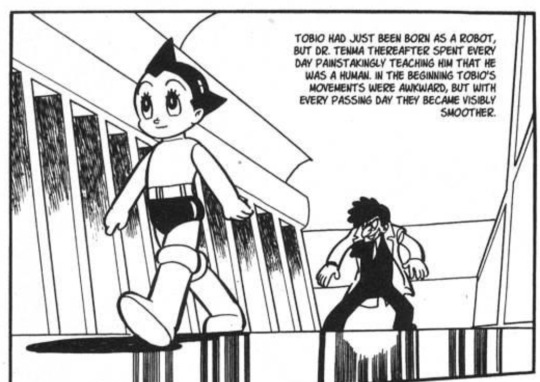
Difficult to say at this point if the original manga has Atom believing initially that he is a human, we do see more play with this in the first episode of the 1980's anime, but it's not really touched on that hard within Astro Boy itself as far as I remember (I suppose the 2009/10 movie does a little, lol, and so does Pluto.). That said, a robot believing themselves to be human is much more notable in Metropolis.
If I were da boss. and I were making my own interpretation of Astro Boy, I do think I would play with this more. The identity crisis element would be really intriguing to me, especially considering that a robot that believes themselves to be human would believe they were above the robotic laws, and the crisis in discovering not only that your identity and self is a lie but also that you are now disallowed from things you previously did not know you were disallowed from and suddenly your own happiness is not allowed to be your priority. I think it would drive some of the robotic rights stuff home a little (although, and I may be wrong, I don't believe the original run of the manga ever really touches on the idea that robots might be entitled to their own happiness over the happiness of humans if the two do not interfere with one another. If I'm wrong we'll see! I have memory issues so some things will be a surprise to me as well even though I reread this series somewhat frequently)
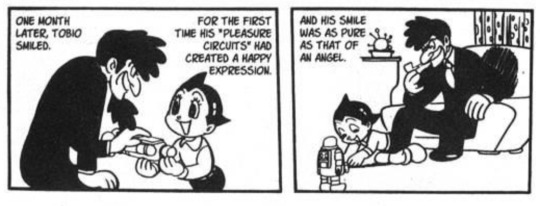
YEAG IT WAS. IT WAS AS PURE AS THAT OF AN ANGEL YOURE SO RIGHT

Kind of already started touching on this - But yeah, the unhappiness here (as well as in 1960's anime) comes from him not physically growing, which is funny because You Probably Could Have Made Him Do That In A Number Of Ways But You Shoved A Bunch Of Rockets And Guns In There Instead. I will also touch on one of the ways in a comic where it is made clear to be an option - A robot's brain can be transferred between bodies, so a new body can be made to suit a robot if they prefer, rather than like, surgically changing what is present.
In 1980, the problem is that Tenma believes that the lack of progress on Atom becoming more human is unresolvable.
In 2003, the problem is that Atom is too similar to Tobio, and Tenma does not want Atom to hate him in the same way Tobio did.
I actually do think that the 2009/10 movie was onto something with this because the problem there is that Atom is too similar to Tobio, but Tenma did not know his son and is under the impression he is different. That's a genuinely interesting approach. Atom is doing things Tobio would have done, acting as Tobio would have, and Tenma is like. This is nothing like my son. Because he just didn't know him he never gave him the time. This forces him to reckon with his own grief just the same - He sees the "differences" in Atom and Tobio and is reminded that his son is gone.
In Pluto, the problem is that Atom is too eager to please Tenma and is not similar enough to Tobio. Atom enjoys things and is happy about things, but Tenma remembers that Tobio hated those things. He brings it up, and Atom is like, okay I'll be more like him. But the fact of the matter is that Tenma knows there are fundamental differences now, and this is a different child. He's forced to reckon with his own grief (despite his best efforts to bring Tobio back) in that his son is gone.
The last two are a lot more about grief than they are about inadequacy, and I like that a lot. It's not in any way Atom's fault that he's rejected - It's that the premise of his existence is flawed. A father can't replace their lost child.
The unhappiness coming from Atom not physically growing is notable though, in the same way I mentioned robotic children earlier. They can't grow, that's an important part of who they are. They are created to be children, they can be nothing but children - But a human child is a growing thing, and a human child is defined by the fact that they are changing - they are becoming less childlike every day. A human child is defined by impermanence, and trying to make a child that will not cease to be a child, by death or otherwise, will make a child that is not a child at all.
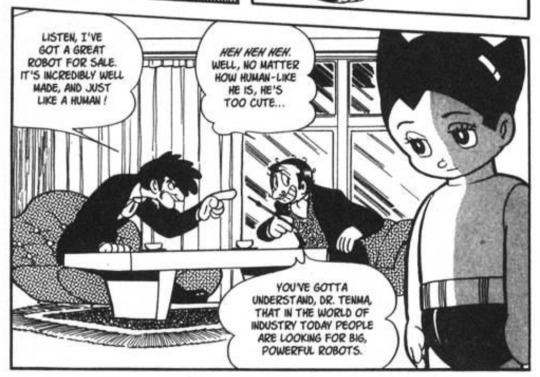
He's so funny for just trying to sell him to any old guy who runs a robot fighting ring after spending like presumably hundreds of millions of Japanese taxpayer dollars on this robot.
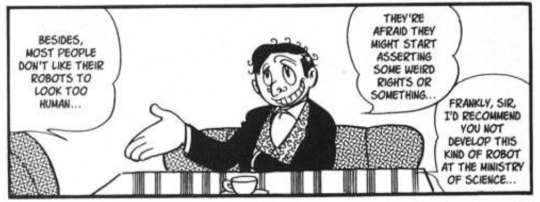
Ahh! Most robots are not created to look human, but Atom is. He's fundamentally representative of a lack of boundary that humans want to ignore. Why would someone want a robot that is not subservient?
To be frankly honest I feel that Pluto missed out on some of this - I like the more explicit approach to hate groups but they don't ever really discuss why they hate robots beyond "they put humans out of a job." I think there's a lot of interesting stuff to be explored here!
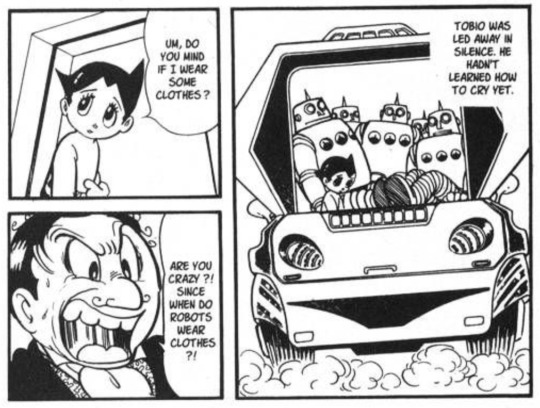
Now that he's no longer being used to replace a human child, he's reduced to the same level of robot as others. I may be wrong in remembering this, but I believe in 2003's anime we do see some robots being like, "Atom is a privileged robot and doesn't really represent us - many of us have a built-in purpose, many of us do not have the right to self determination he has. Many of us do not have the humanity he is given, but he is meant to represent us just the same."
The fact that he's had access to these experiences already puts him between robot and human.
Also, "He hadn't learned how to cry yet" is devastating.
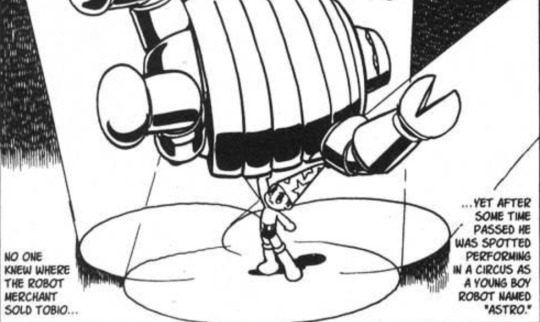
It's interesting that Hamegg is not the circus ringleader here as he is in some later iterations (although, I'm biased, I prefer 2003's approach where he is not sold to a circus at all but rather disposed of and Ochanamizu finds him and brings him back. Sue me.)- So actually, Tenma just sold him to some guy who would sell him elsewhere.
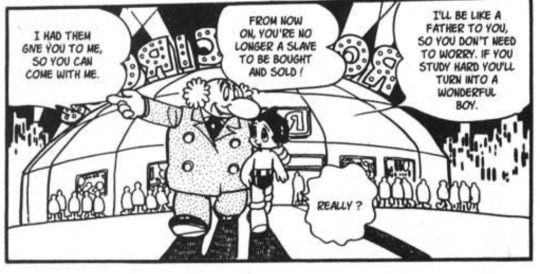
Wow that was easy!
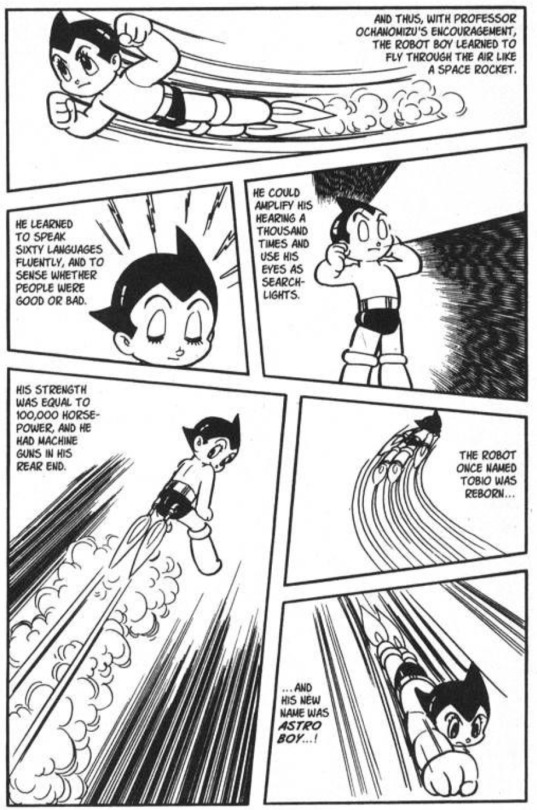
(guy who hates dichotomies between good and bad alert) Nice dichotomy idiot. now what lies outside it.
Thanks for getting through this long analysis of (checks book) 23 pages of content. I should have a little less to say about most other chapters but this one has a lot to chew on.
#astro boy manga analysis#astro boy#mighty atom#tetsuwan atom#Please respond if you feel like it! I'm pretty sure no one at all is going to read this actually.
33 notes
·
View notes